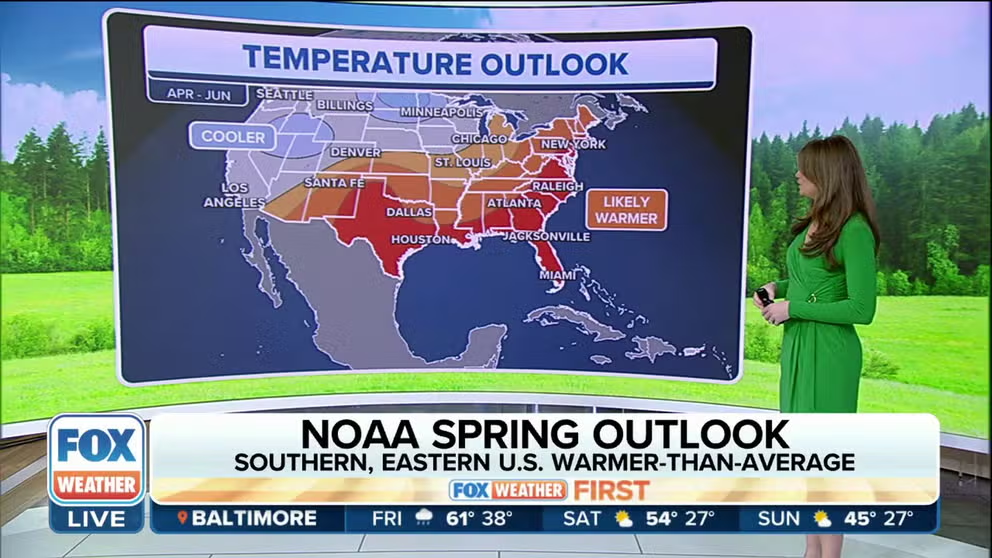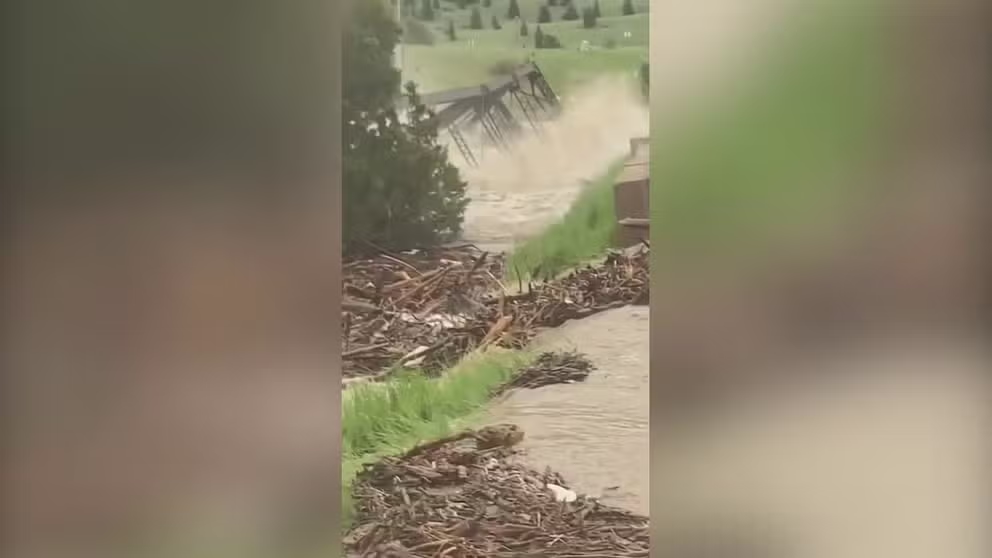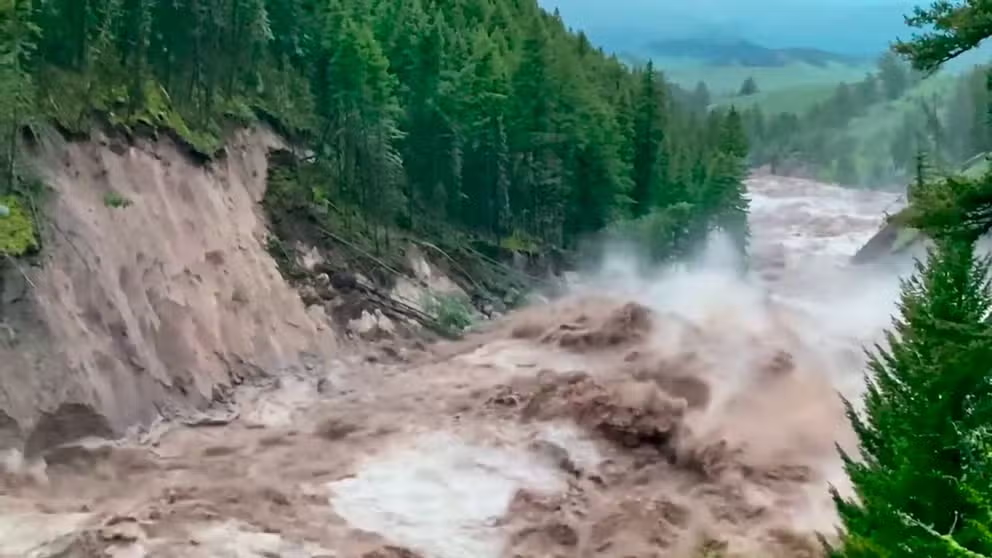5 spring weather extremes to watch out for this year
Severe weather, flooding, winter storms, temperature swings and wind are all spring weather extremes to keep an eye on as we progress through the season.
NOAA Spring Outlook: Warmer-than-average for East Coast, cooler far West
NOAA predicts above-average seasonal temperatures for the north slope of Alaska, parts of the Southwest, southern Plains and Southeast and northward to include the Ohio Valley, mid-Atlantic and Northeast.
The winter season brought weather extremes across the U.S., including blizzards, deadly severe weather outbreaks and atmospheric river storms. And even though we’ve transitioned to spring, extreme weather will continue to threaten millions from coast to coast.
Here are five spring weather extremes to watch out for this year.
1. Tornado threat reaches seasonal peak in spring
Tornadoes can form during any month of the year, but tornadic activity has a distinct seasonal peak beginning in April.
March is the least-active spring month for twisters to form, with an average of about 92. However, that number skyrockets in April, with an average of 212 tornadoes, and increases even further in May, with an average of 294 twisters.
May is historically the most active month for tornadoes in the U.S.
WE'RE ENTERING AMERICA'S MOST ACTIVE TIME OF YEAR FOR TORNADOES
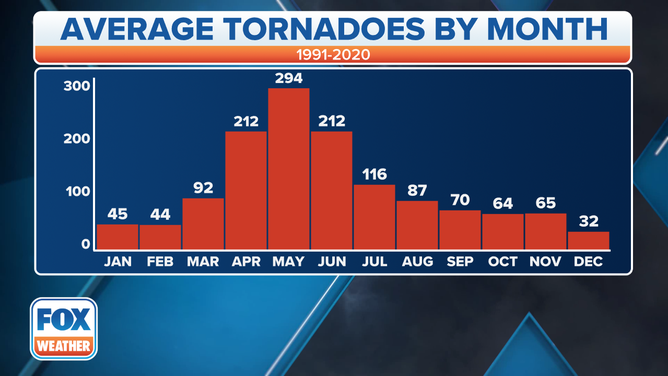
Average tornadoes by month.
(FOX Weather)
Where do tornadoes typically form in spring?
Tornado outbreaks during the spring are most common when a strong southward dip in the jet stream punches into the Plains or Midwest, and warm, humid air from the Gulf of Mexico surges northward out ahead of it at the surface.
That strong jet stream acts as fuel for severe weather, which adds the twisting and energy that is needed for thunderstorms to develop and grow in intensity, potentially developing into supercell thunderstorms that could produce tornadoes.
By the spring, the jet stream migrates northward out of the South and sets up more frequently over the Plains and Midwest as it retreats toward the Canadian border for the summer.
That's why the potential for tornadoes increases in "Tornado Alley" during the spring while the risk of tornadoes decreases for the southern U.S.
The maps below show which locations in the U.S. are most likely to see tornadoes during the spring months of March, April and May.
HERE'S WHERE TORNADOES ARE MOST LIKELY TO OCCUR IN EACH MONTH
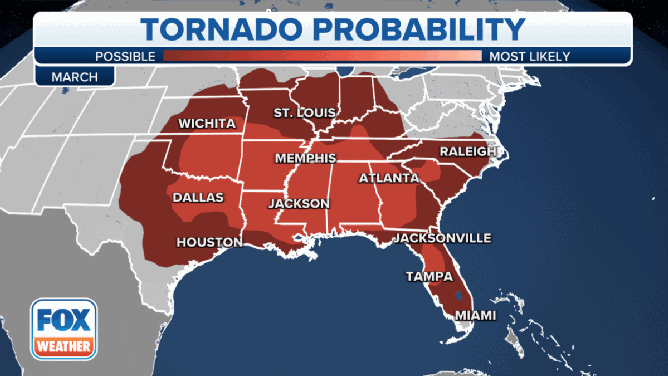
March, April and May usually see a dramatic jump in the number of tornadoes across the U.S.
(FOX Weather)
2. Major winter storms are still possible in spring
Just because spring is here doesn’t mean that’s the end of winter weather until later this year.
Major winter storms, including blizzards, are possible in many areas of the U.S. during the spring. However, the regions that face the most significant risk include the Rocky Mountains and the adjacent Front Range eastward into portions of the Plains and Upper Midwest.
WHICH IS THE SNOWIEST MONTH OF THE YEAR?

March is the snowiest month for locations dotted with purple, while the map showing white dots indicates locations where April is the snowiest month.
(FOX Weather)
In fact, March and April are the snowiest months of the year in parts of the Rockies and High Plains.
Even the Northeast can see major impacts from winter storms. Some of the most notable storms to impact the Northeast during the spring include the March 1993 "Storm of the Century" and a blizzard between April 6-7, 1982, that buried many parts of the region in 10 to 20 inches of snow. Some areas of New England even saw snowfall totals between 20 and 30 inches.
"Storm of the Century": A look back at one of the strongest winter storms to ever hit the East Coast
In March 1993, a storm now called the
3. Spring flooding is a serious concern
River flooding can also become a serious concern in the spring, especially from the Plains to the Midwest and portions of New England.
This usually occurs when temperatures quickly rise and melt any snow that remains on the ground following the winter.
Montana bridge swept away as severe flooding hits Yellowstone National Park
A Montana bridge was swept away on Monday as severe flooding hits Yellowstone National Park.
Other than a major winter storm that dumped more than 30 inches of snow across some parts of New England in mid-March, the region didn’t see much snow this season.
However, copious amounts of snow fell in the Midwest this winter, including Minneapolis, which was reporting its eighth-snowiest season on record as of March 20.
The most dangerous spring floods occur when heavy rain moves over an area with already-saturated grounds from melting snow or recent rainfall because the soil is unable to absorb additional water.
This is what occurred in Yellowstone National Park last year. Days of heavy rain fell onto a melting snowpack, which all drained into the Yellowstone River and sent it over its banks, leading to rockslides, mudslides and catastrophic flooding.
The park was closed for months while crews worked to make repairs to destroyed homes and bridges and clear debris from roadways.
Watch: Video shows raging rivers, destruction from catastrophic Yellowstone flooding
The National Park Service released a video showing raging rivers and destruction as the result of catastrophic and devastating flooding at Yellowstone National Park in June.
In addition to river flooding, the threat of flash flooding also increases in the spring because thunderstorms become more common due to the warmer, more humid air that comes with the change in season.
Thunderstorms are notorious heavy rain producers that can dump an inch or two of rainfall per hour, sometimes for multiple consecutive hours if the storms move slowly or repeatedly stall over the same areas.
SNOW CONSIDERED CRUCIAL TO LONG-TERM DROUGHT MITIGATION
Where is the spring flood risk this year?
According to NOAA, many areas in the eastern half of the continental U.S., including most of the Mississippi River Basin, are at risk of spring flooding this year.
In addition, an above-average to record snowpack in the Sierra Nevada mountains, combined with elevated soil moisture, increases the threat of spring flooding in the West due to snowmelt, especially at high elevations, NOAA said.
"Approximately 44% of the U.S. is at risk for flooding this spring," said Ed Clark, director of NOAA’s National Water Center. "California’s historic snowpack, coupled with spring rain, is heightening the potential for spring floods."
SEE SOME OF THE MOST CATASTROPHIC ATMOSPHERIC RIVERS AND FLOODING IN CALIFORNIA HISTORY
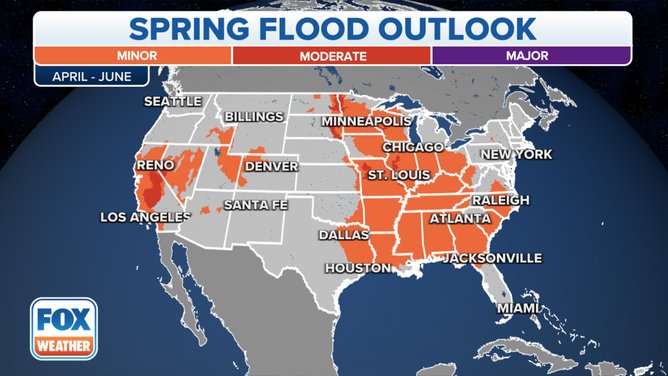
This map depicts the locations where there is a greater than 50% chance of minor to major flooding during March through May 2023.
(FOX Weather)
4. Spring is a windy season
Spring is a windy season for a large portion of the country, especially in March and April.
That's because strong wind gusts are often ushered in by storm systems that track across the U.S.
March is the windiest month of the year for dozens of cities from the Deep South through the Northeast, but storm systems that bring gusty winds can also persist into April.
5. Spring brings wild temperature swings
Big temperature swings are common, especially during the early part of spring.
Warm air typically surges into a region out ahead of an area of low pressure or a cold front and provides a taste of spring warmth, but temperatures can drop rapidly behind the storm system as colder air rushes back in from the north and northwest in its wake.
More prolonged warm weather becomes common later in the spring as cold air retreats back to Canada as we approach the start of summer.
CAN BIG TEMPERATURE SWINGS MAKE YOU SICK?
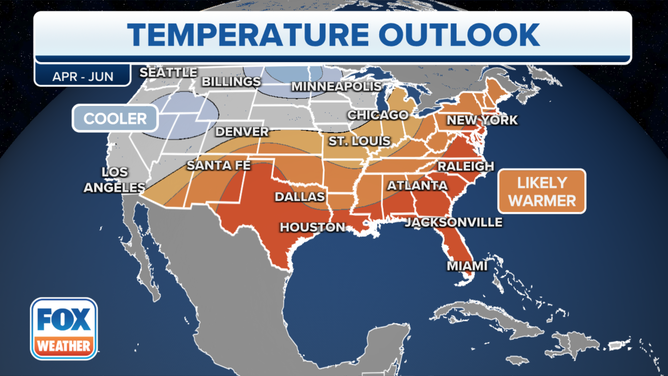
NOAA's Climate Prediction Center shows the temperature outlook in the U.S. during April through June 2023.
(FOX Weather)
